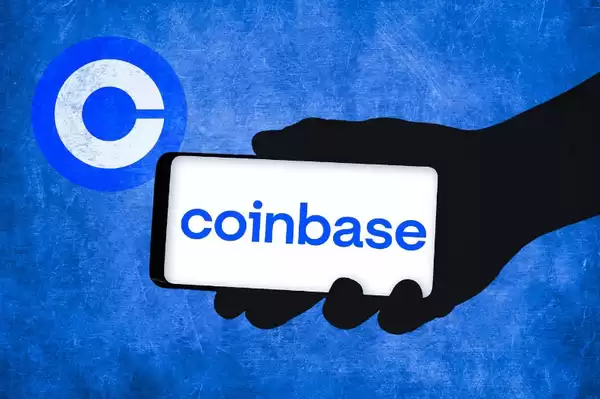-
 bitcoin
bitcoin $123963.239194 USD
1.37% -
 ethereum
ethereum $4529.082464 USD
1.07% -
 xrp
xrp $2.983640 USD
0.71% -
 tether
tether $1.000287 USD
0.02% -
 bnb
bnb $1179.874393 USD
2.99% -
 solana
solana $230.633678 USD
1.55% -
 usd-coin
usd-coin $0.999835 USD
0.03% -
 dogecoin
dogecoin $0.254240 USD
1.34% -
 tron
tron $0.341176 USD
0.15% -
 cardano
cardano $0.842285 USD
0.52% -
 hyperliquid
hyperliquid $48.537896 USD
-0.86% -
 chainlink
chainlink $21.863092 USD
-0.84% -
 ethena-usde
ethena-usde $0.999743 USD
-0.07% -
 sui
sui $3.579561 USD
-0.18% -
 stellar
stellar $0.403418 USD
2.67%
How to play Coinbase leverage
Understanding leverage can empower traders to magnify profits, but it's crucial to assess risks, use appropriate amounts, and implement risk management tactics like stop-loss orders for successful leveraged trading.
Nov 10, 2024 at 01:56 pm

How to Play Coinbase Leverage: A Comprehensive Guide for Beginners
Coinbase is one of the leading cryptocurrency exchanges that allows users to trade a wide range of digital assets. Recently, the platform has introduced a new feature that gives users the ability to trade with leverage. This can potentially amplify both profits and losses, but it's crucial for users to understand how leverage works before engaging in this type of trading.
In this comprehensive guide, we'll cover everything you need to know about Coinbase leverage, including how to get started, the risks involved, and strategies for successful leveraged trading.
1. Understand What Leverage Is
Leverage is a financial tool that allows traders to borrow funds from a broker to increase their trading positions. This means that you can control a larger amount of assets than you would be able to with your own funds. For example, if you have $100 in your account and you use 10x leverage, you could control $1,000 worth of assets.
Leverage can be a powerful tool for magnifying profits, but it also comes with increased risk. If the market moves against you, you could lose more money than you initially invested. It's essential to only use leverage if you understand the risks involved and if you have a solid trading strategy.
2. How to Get Started with Coinbase Leverage
To get started with Coinbase leverage, you'll need to meet the following requirements:
- You must be a Coinbase Pro account holder.
- You must have completed KYC and AML verification.
- You must have sufficient funds in your account to cover the margin requirements.
Once you've met these requirements, you can follow these steps to enable leverage:
- Log into your Coinbase Pro account.
- Click on the "Trade" tab.
- Select the trading pair you want to trade.
- Click on the "Leverage" tab.
- Select the amount of leverage you want to use.
3. Choose the Right Leverage Amount
The amount of leverage you use will have a significant impact on your potential profits and losses. It's important to choose an amount that you're comfortable with and that aligns with your trading strategy.
If you're a beginner, it's generally recommended to start with a low amount of leverage, such as 2x or 3x. This will help you to get used to the mechanics of leveraged trading without exposing yourself to too much risk.
As you gain experience, you may want to increase the amount of leverage you use. However, it's crucial to remember that higher leverage comes with higher risk. Never use more leverage than you can afford to lose.
4. Set Stop-Loss Orders
A stop-loss order is an essential risk management tool that can help you to protect your profits and limit your losses. A stop-loss order will automatically sell your position if the market price falls below a certain level.
When using leverage, it's important to always have a stop-loss order in place. This will help you to prevent catastrophic losses if the market moves against you.
5. Monitor Your Position Closely
Once you've entered a leveraged position, it's important to monitor it closely. You should check the market price regularly and be prepared to take action if the price moves against you.
If the price falls close to your stop-loss order, you may want to adjust the order to a lower level. This will help you to protect your profits if the price continues to fall.
Risks of Trading with Leverage
It's crucial to be aware of the risks of trading with leverage before you begin. Leverage can amplify both profits and losses, so it's possible to lose more money than you initially invested. Here are some of the risks to consider:
- Margin calls: If the market moves against you and your losses exceed your margin requirements, you may receive a margin call. This means that you'll need to deposit more funds into your account to cover the losses. If you're unable to meet the margin call, your position will be liquidated.
- Liquidations: If the market price falls below your stop-loss order, your position will be automatically liquidated. This means that you'll sell your assets at a loss.
- Increased volatility: Leveraged trading can increase the volatility of your positions. This means that the market price can move more rapidly, which can lead to larger profits or losses.
Strategies for Successful Leveraged Trading
While leverage can be a risky tool, it can also be a powerful profit enhancer if used correctly. Here are some strategies for successful leveraged trading:
- Trade in a liquid market: Only trade in assets that have a high trading volume. This will help to ensure that you're able to get in and out of positions quickly without incurring significant slippage.
- Choose the right entry point: Before entering a leveraged position, make sure that the market is trending in your favor. You should also look for technical indicators that support your trade idea.
- Set realistic profit targets: Don't be greedy when trading with leverage. It's important to set realistic profit targets so that you don't take on too much risk.
- Manage your risk: Always use a stop-loss order to protect your profits and limit your losses. You should also monitor your position closely and be prepared to take action if the market moves against you.
Conclusion
Leveraged trading can be a powerful tool for experienced traders, but it's important to understand the risks involved before you begin. By following the steps and strategies outlined in this guide, you can increase your chances of success when trading with leverage.
Disclaimer:info@kdj.com
The information provided is not trading advice. kdj.com does not assume any responsibility for any investments made based on the information provided in this article. Cryptocurrencies are highly volatile and it is highly recommended that you invest with caution after thorough research!
If you believe that the content used on this website infringes your copyright, please contact us immediately (info@kdj.com) and we will delete it promptly.
- BlockDAG, DOGE, HYPE Sponsorship: Crypto Trends Shaping 2025
- 2025-10-01 00:25:13
- Deutsche Börse and Circle: A StableCoin Adoption Powerhouse in Europe
- 2025-10-01 00:25:13
- BlockDAG's Presale Buzz: Is It the Crypto to Watch in October 2025?
- 2025-10-01 00:30:13
- Bitcoin, Crypto, and IQ: When Genius Meets Digital Gold?
- 2025-10-01 00:30:13
- Stablecoins, American Innovation, and Wallet Tokens: The Next Frontier
- 2025-10-01 00:35:12
- NBU, Coins, and Crypto in Ukraine: A New Yorker's Take
- 2025-10-01 00:45:14
Related knowledge

What is the difference between futures and perpetual contracts for Bitcoin?
Oct 02,2025 at 11:54pm
Understanding Bitcoin Futures Contracts1. Bitcoin futures are derivative instruments that allow traders to speculate on the future price of Bitcoin at...

What is the best time to trade PEPE contracts?
Oct 03,2025 at 11:54am
Understanding PEPE Contract Volatility1. PEPE contracts exhibit extreme price fluctuations due to their meme-based nature and low market cap. Trading ...

What are the common mistakes to avoid with Bitcoincoin contracts?
Oct 03,2025 at 08:54am
Emerging Trends in the Cryptocurrency Market1. Decentralized finance (DeFi) platforms continue to expand their influence across the blockchain ecosyst...

What is the maintenance margin for Bitcoin contracts?
Oct 02,2025 at 01:36am
Decentralized Exchanges Gain Momentum in 20241. Decentralized exchanges (DEXs) have seen a significant rise in trading volume, surpassing centralized ...

How to use technical analysis for trading XRP contracts?
Oct 03,2025 at 01:18pm
Understanding Price Patterns in XRP Futures1. Identifying chart patterns such as triangles, head and shoulders, and double tops or bottoms can provide...

What does "longing" PEPE contracts mean?
Oct 03,2025 at 11:54pm
Understanding Decentralized Exchanges in the Crypto Ecosystem1. Decentralized exchanges (DEXs) operate without a central authority, allowing users to ...

What is the difference between futures and perpetual contracts for Bitcoin?
Oct 02,2025 at 11:54pm
Understanding Bitcoin Futures Contracts1. Bitcoin futures are derivative instruments that allow traders to speculate on the future price of Bitcoin at...

What is the best time to trade PEPE contracts?
Oct 03,2025 at 11:54am
Understanding PEPE Contract Volatility1. PEPE contracts exhibit extreme price fluctuations due to their meme-based nature and low market cap. Trading ...

What are the common mistakes to avoid with Bitcoincoin contracts?
Oct 03,2025 at 08:54am
Emerging Trends in the Cryptocurrency Market1. Decentralized finance (DeFi) platforms continue to expand their influence across the blockchain ecosyst...

What is the maintenance margin for Bitcoin contracts?
Oct 02,2025 at 01:36am
Decentralized Exchanges Gain Momentum in 20241. Decentralized exchanges (DEXs) have seen a significant rise in trading volume, surpassing centralized ...

How to use technical analysis for trading XRP contracts?
Oct 03,2025 at 01:18pm
Understanding Price Patterns in XRP Futures1. Identifying chart patterns such as triangles, head and shoulders, and double tops or bottoms can provide...

What does "longing" PEPE contracts mean?
Oct 03,2025 at 11:54pm
Understanding Decentralized Exchanges in the Crypto Ecosystem1. Decentralized exchanges (DEXs) operate without a central authority, allowing users to ...
See all articles










































































